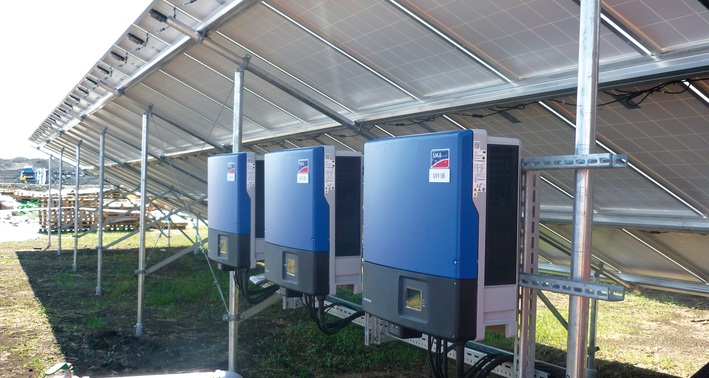With SMA, Users Stay One Step Ahead in the Integration of PV Plants

Over the last few years, distributed generation systems, such as PV, have grown rapidly throughout the country. Every day there are more and more systems integrated to the grid. However, with the growth and increased penetration of distributed energy systems (DERs), new challenges arise. This three part series will look at the best solutions to overcome these challenges.
As generation plants increase across the distribution network, the regular flow of current is altered, and hence, different types of effects and anomalies appear in the behavior of grid voltages and frequencies. In principle, the integration of a few distributed generation systems does not represent a major problem to grid stability, but when these new energy sources become a significant percentage of the total generation capacity, new challenges emerge. Most of these challenges relate to the complexity of managing the bidirectional flow of energy created by multiple generation sources along the grid.
The principle of operation of an electric grid is dependent on two aspects: generation capacity and energy demand. The general idea is that demand must be met 24 hours a day. Obviously, the demand cannot be seen as a constant throughout these 24 hours. Demand is affected by different external factors, but mainly by the distribution of the population and by the residential and commercial patterns that exist in energy consumption at home as well as in the industrial or commercial sector.
With this in mind, it is possible to define peak and valley periods in the energy demand curve. The challenge is to be able to control the flow of energy so that there is no saturation in the network when there is low demand, and on the other hand, that energy supply is adequate during hours of greatest demand without experiencing voltage sags. Presently, sophisticated control systems allow grid operators to support and balance the grid at all times without generating spikes or pitfalls that can affect the normal operation of the energy flow.
If we focus on distributed generation systems, the problem comes in a more complex form because of the discrepancy between the energy demand curve and the production curve of a PV system. Usually, highest energy demand starts at sundown when most people return to their homes. During this period of approximately four or five hours is when more loads are connected to the grid.
Meanwhile, peak production of a solar system usually occurs at noon, which represents the valley or the period of lowest energy demand in an average household. At sundown – peak demand time – is when solar radiation drastically drops and PV systems stop generating current. This discrepancy turns power distribution control into a complex task as the number of grid tied PV systems increases, not only because of the adverse effects created in the current flow, but also because in most cases there is no straightforward solution or a standardized control system that would allow the grid operator to counteract or prevent these anomalies from reaching critical levels that could affect the operation of the distribution network.
One way to address this problem would be through the integration of storage systems or batteries that could store the energy produced during the day to be used in peak hours and at the same time reduce the discrepancy between production and demand. The main drawback of battery-based systems is the high cost required to acquire and implement the solution. Undoubtedly in the future, storage systems will be crucial in the evolution of the grid, and will form an essential part of the solution to mitigate the effects caused by the high penetration of PV plants.
Currently a simpler and more viable approach to overcome the different challenges related to the growth of DERs is to improve the operation characteristics of the inverters. In many cases, adjusting the behavior of the inverter is the simplest and most economical way to mitigate problems in the grid, and by adding new intelligent functionalities it is possible to allow them to adapt easily to grid changes and to respond quickly to the frequency and voltage fluctuations that occur as a result of these circumstances, preventing faults and increasing the reliability of the system in general.
In part two of our series, we’ll cover the smart functionalities of our Sunny Tripower three-phase inverters and Sunny Boy single-phase inverters.

Can I use battery with sunny boy sb1700???